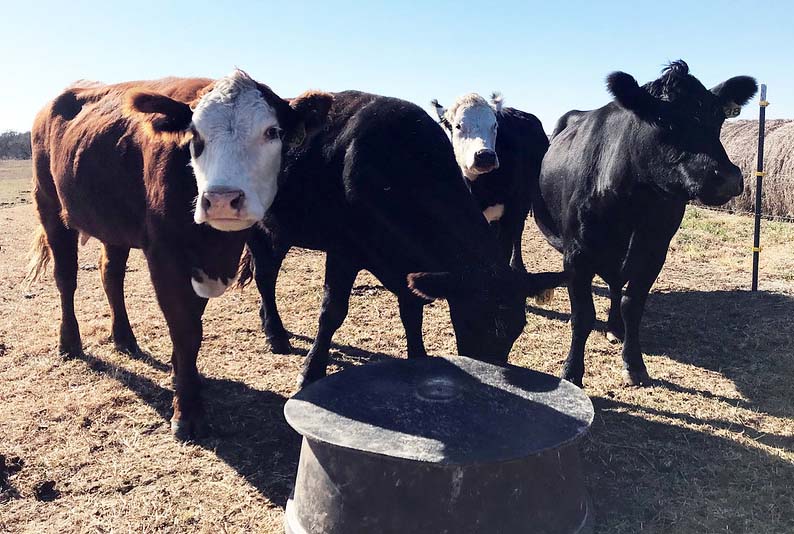
Mineral supplementation in a cow’s diet will vary by region, said experts at Kansas State University’s Beef Cattle Institute. | Download this photo.
Cattle Chat: Forages, time of year influence mineral supplementation
K-State beef cattle experts recommend turning to local experts for advice on supplementing cow’s diets
Nov. 15, 2022
By Lisa Moser, K-State Research and Extension news service
MANHATTAN, Kan. — Many start their day with a multivitamin to supplement their diet in hopes of being as healthy as possible. In much the same way, mineral supplementation can overcome deficiencies in the grasses that cattle graze, said the experts at Kansas State University’s Beef Cattle Institute.
Speaking on a recent Cattle Chat podcast, the beef cattle experts stressed the importance of minerals in a grazing animal’s diet.
“Cattle get the majority of their nutrition from forages, and the quality of what they are grazing will vary widely depending on the maturity of the grass and season of the year,” veterinarian Bob Larson said.
In addition, nutritionist Phillip Lancaster said that different forage species will have a varied mineral concentration.
“Across the country, there is a variation in soil types and the ability of plants to take up the minerals from the soil as well as the concentration of the minerals within the soil,” Lancaster said.
Because of that variation, Larson said it is important to consult with local experts to know how to optimally supplement minerals to the animals.
“Good trace mineral nutrition is local, and there are experts in the area that can recommend the mineral package that you need,” Larson said, adding that forages will vary widely in the trace mineral concentrations of copper, zinc, manganese and selenium.
Another factor in creating a mineral supplement plan is where the cow is at in her production cycle. Larson said lactating cows will have a greater nutritional demand than non-lactating females.
“If we look at the cow’s requirement, the goal needs to be to supplement as close to that requirement as possible by matching it up with the local forages,” Lancaster said.
He added: “In a lot of instances we are over-supplementing and that can cause an antagonistic effect.”
Larson explained the antagonistic effect being that the animal’s body is less likely to use the mineral because of the influence of the other minerals. He gave the example of iron being an antagonist for copper.
“There are a number of things in the diet that can cause antagonisms, so it is important to do the work of optimizing the minerals and not assuming that more is better,” Larson said.
To hear the full discussion, listen to the Cattle Chat podcast online or through your preferred streaming platform.

